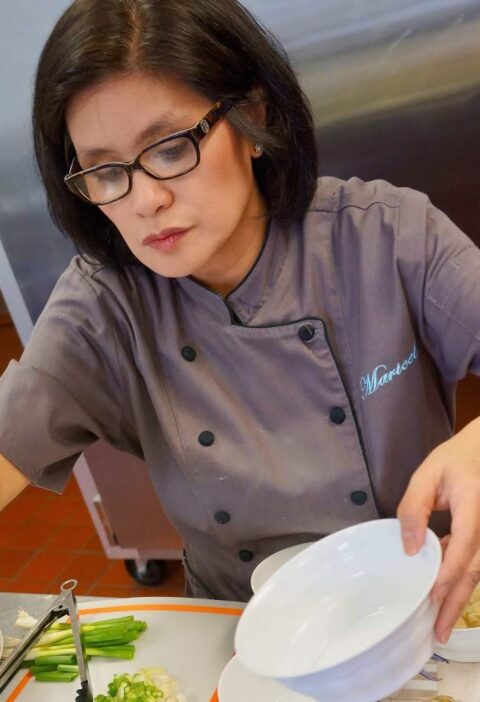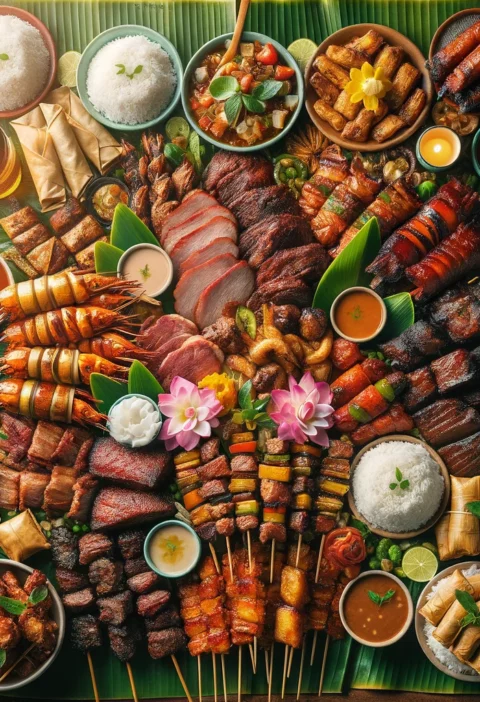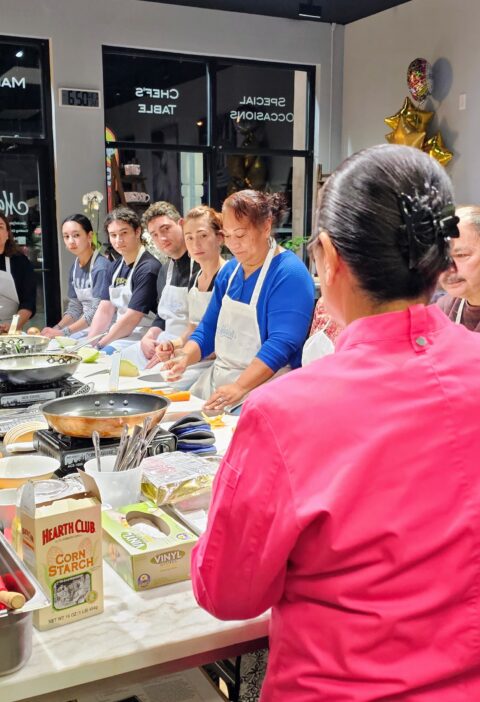Hello, I’m Chef Maricel, and today I’m excited to share with you the vibrant and communal dining traditions of the Philippines: the Boodle Fight and the Kamayan Feast. Both of these feasts are deeply rooted in Filipino culture and offer a unique, hands-on dining experience that brings people together. Let’s explore the history, differences, and similarities of these traditions, and when to hold one versus the other.
What is a Boodle Fight?
Historical Background
The Boodle Fight originated in the Philippine military as a way to break down barriers and promote camaraderie among soldiers. The term “Boodle” refers to the food itself, and “Fight” denotes the competitive, all-in nature of the feast, where everyone eats together, regardless of rank or status. This tradition has since transcended military practice and become a popular way to celebrate various social gatherings.
Key Characteristics of a Boodle Fight:
- Banana Leaves: The table is covered with banana leaves, creating a natural and eco-friendly dining surface.
- Variety of Foods: The spread includes a wide range of Filipino dishes such as grilled meats, seafood, rice, vegetables, and tropical fruits.
- Hands-On Eating: Utensils are set aside, and everyone digs in with their hands, emphasizing a communal and egalitarian spirit.
- Shared Feast: All the food is shared from a central pile, fostering a sense of unity and togetherness.
What is a Kamayan Feast?
Historical Background
The Kamayan Feast, derived from the Filipino word “kamay,” meaning hand, is a traditional way of eating that dates back to pre-colonial times. Kamayan, or hand-to-mouth dining, has always been a part of Filipino culture, symbolizing the intimate and personal connection to food and the act of sharing it with loved ones. Over time, it has evolved into a celebratory dining experience.
Key Characteristics of a Kamayan Feast:
- Banana Leaves: Like the Boodle Fight, banana leaves are used as a table covering, enhancing the traditional feel.
- Curated Dishes: The menu for a Kamayan Feast is carefully curated and often includes lechon (roast pig), adobo, lumpia (spring rolls), seafood, and various native delicacies.
- Hands-On Eating: Participants use their hands to eat, making the experience more tactile and connected to the food.
- Celebratory Atmosphere: Kamayan Feasts are typically held for special occasions such as birthdays, fiestas, and holidays, emphasizing joy, gratitude, and family bonds.
Differences and Similarities
Similarities:
- Hands-On Dining: Both feasts involve eating with your hands, creating a direct and engaging dining experience.
- Banana Leaves: The use of banana leaves as a dining surface is common to both traditions, adding an authentic touch.
- Communal Eating: Both emphasize sharing food from a central spread, fostering a sense of community and togetherness.
Differences:
- Origins: Boodle Fights have military origins, promoting equality and camaraderie among soldiers, while Kamayan Feasts are rooted in traditional Filipino family dining practices.
- Occasions: Boodle Fights are often used for casual, large gatherings and team-building events, whereas Kamayan Feasts are more suited for intimate, celebratory occasions like birthdays and holidays.
- Food Presentation: Boodle Fights typically have a more extensive variety of dishes piled together, while Kamayan Feasts feature a curated selection of dishes, often with a more organized presentation.
When to Hold One Versus the Other
Boodle Fight:
- Large Gatherings: Perfect for company team-building events, community gatherings, and casual family reunions.
- Outdoor Events: Ideal for picnics, beach parties, and other outdoor activities where a large, shared feast can be enjoyed.
- Casual Celebrations: Suitable for any event where the emphasis is on fun, camaraderie, and shared experiences.
Kamayan Feast:
- Special Occasions: Best for birthdays, weddings, anniversaries, and festive holidays where a more intimate and curated dining experience is desired.
- Family Gatherings: Perfect for family reunions and get-togethers where the focus is on celebrating with loved ones.
- Cultural Celebrations: Ideal for showcasing Filipino heritage and culinary traditions at cultural festivals and themed parties.
The Joy of Filipino Communal Dining
Both Boodle Fights and Kamayan Feasts highlight the importance of community, equality, and shared experiences in Filipino culture. They are more than just meals; they are celebrations of togetherness, where the boundaries between people are dissolved as they come together to enjoy delicious food.
My Hope for You
I hope that through these feasts, you will experience the rich cultural heritage of the Philippines and the warmth of Filipino hospitality. Whether you’re participating in a lively Boodle Fight or a joyous Kamayan Feast, you’ll find that the essence of these traditions is about more than just the food—it’s about the connections and memories created around the table.
Join Us at Maricel’s Kitchen
At Maricel’s Kitchen, we celebrate these wonderful traditions and invite you to join us for an authentic Filipino dining experience. Our classes and events are designed to immerse you in the vibrant flavors and communal spirit of the Philippines. Come and share a meal with us, and let’s create beautiful memories together.




